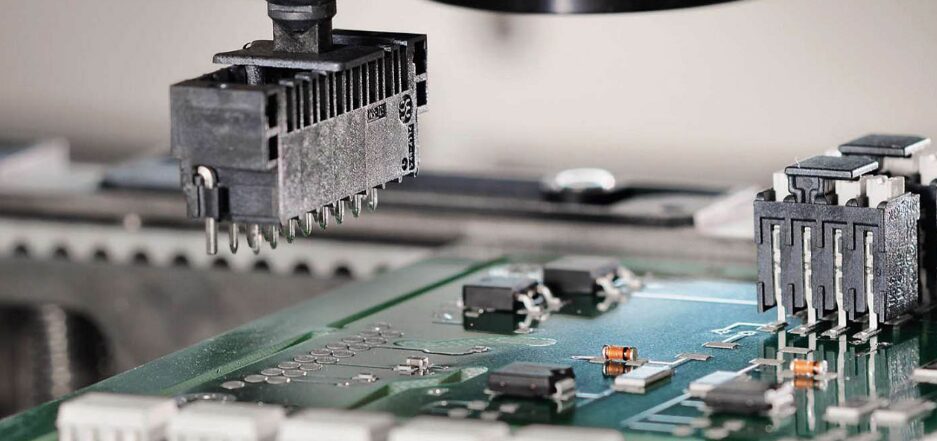
Click the blue text to follow us

In electronic engineering and maintenance, the identification and testing of electronic components are crucial steps to ensure the proper functioning of circuits and troubleshoot issues. Each component has its unique characteristics and functions; understanding their identification and testing methods helps engineers and technicians complete their tasks efficiently.

1. Resistors
Identification:
Color Coding: Identify resistance values through the color bands on the resistor (typically using 4 or 5 color rings). Each color represents a specific digit and multiplier.
Marking: Some low-power resistors may directly indicate resistance values and tolerances.
Testing:
Multimeter: Use the resistance setting on a multimeter to measure resistance values; under normal conditions, the measured value should match the nominal value.
Temperature Coefficient: Determine the temperature coefficient based on the type of resistor to assess resistance changes under temperature variations.
2. Capacitors
Identification:
Nominal Value: Capacitors usually indicate their capacitance value on their surface, such as 10μF (microfarads) and their rated voltage (e.g., 16V).
Capacitor Type: Identify types through shape, materials, and colors, such as electrolytic capacitors and ceramic capacitors.
Testing:
Multimeter: Use the capacitance setting on a multimeter to measure capacitance values, ensuring they are within tolerance.
Voltage Test: Perform a voltage test on electrolytic capacitors to ensure they operate normally at rated voltages.
3. Diodes
Identification:
Identification Code: Diodes typically have their model printed on the casing; refer to the datasheet to find their characteristics.
Polarity: Diodes have positive and negative polarity markings; the positive terminal usually has a longer lead.
Testing:
Multimeter: Check the conduction state under the diode testing setting. Normally, a diode conducts under forward bias (about 0.7V) and does not conduct under reverse bias (infinity).
Leakage Test: Confirm the presence of leakage by measuring reverse current (under reverse bias).
4. Transistors
Identification:
Model Identification: Transistors usually have a model identification printed on them; refer to the datasheet for their characteristics.
Pin Definition: Distinguish the three pins: Base (B), Emitter (E), and Collector (C), and update the electronic component database to find pin configurations.
Testing:
Multimeter: Use the transistor testing setting on a multimeter to test the β value (current gain) and conduction state.
Polarity Testing: In the case of PNP and NPN transistors, check the correct conduction between the pins.
5. Integrated Circuits (ICs)
Identification:
Model and Packaging: The model of the IC is usually printed on its top; detailed information can be obtained by looking up the datasheet.
Pin Configuration: Use pin identification tools or refer to the datasheet to identify the function of each pin.
Testing:
Logic Analyzer: Monitor input and output signals to ensure the IC operates correctly.
Multimeter: Test the power and ground pins to confirm voltage levels are normal.
6. Inductors
Identification:
Nominal Value: Inductors are often marked with color coding, labels, or datasheets to indicate inductance values (e.g., 10μH).
Shape and Size: Different types of inductors (e.g., air-gap inductors, ferrite core inductors) have distinct appearances.
Testing:
LCR Meter: Use an LCR meter (inductance, capacitance, resistance measuring instrument) to measure inductance values and verify they match nominal values.
DC Resistance: Check the DC resistance of the inductor to ensure it is free from short-circuits or open-circuit faults.
Identifying and testing electronic components are essential skills for electronic engineers and technicians. By understanding the characteristics and testing methods of each component, technicians can effectively maintain and repair circuits, enhancing the reliability of electronic devices.

Zhaoyi Microwave Mall is a professional RF and microwave component marketplace dedicated to providing high-quality, high-performance RF and microwave products to our customers. Whether you are an RF engineer, a wireless communication enthusiast, or an electronic device manufacturer, we can meet your needs.
As a specialized electronic component marketplace, Zhaoyi Microwave Mall offers a wide range of products, including amplifier devices, RF switches, filters, mixers, power dividers, couplers, and attenuators. We collaborate with several well-known RF and microwave component manufacturers to ensure our products have excellent performance and reliability.
👉👉 For material sourcing and order inquiries
👉👉 You can consult via WeChat (zywbic) QQ1186158824 🧐
Chip/module supply and demand, welcome inquiries at www.rfz1.com!

Zhaoyi Microwave Mall
A professional supplier of RF chips